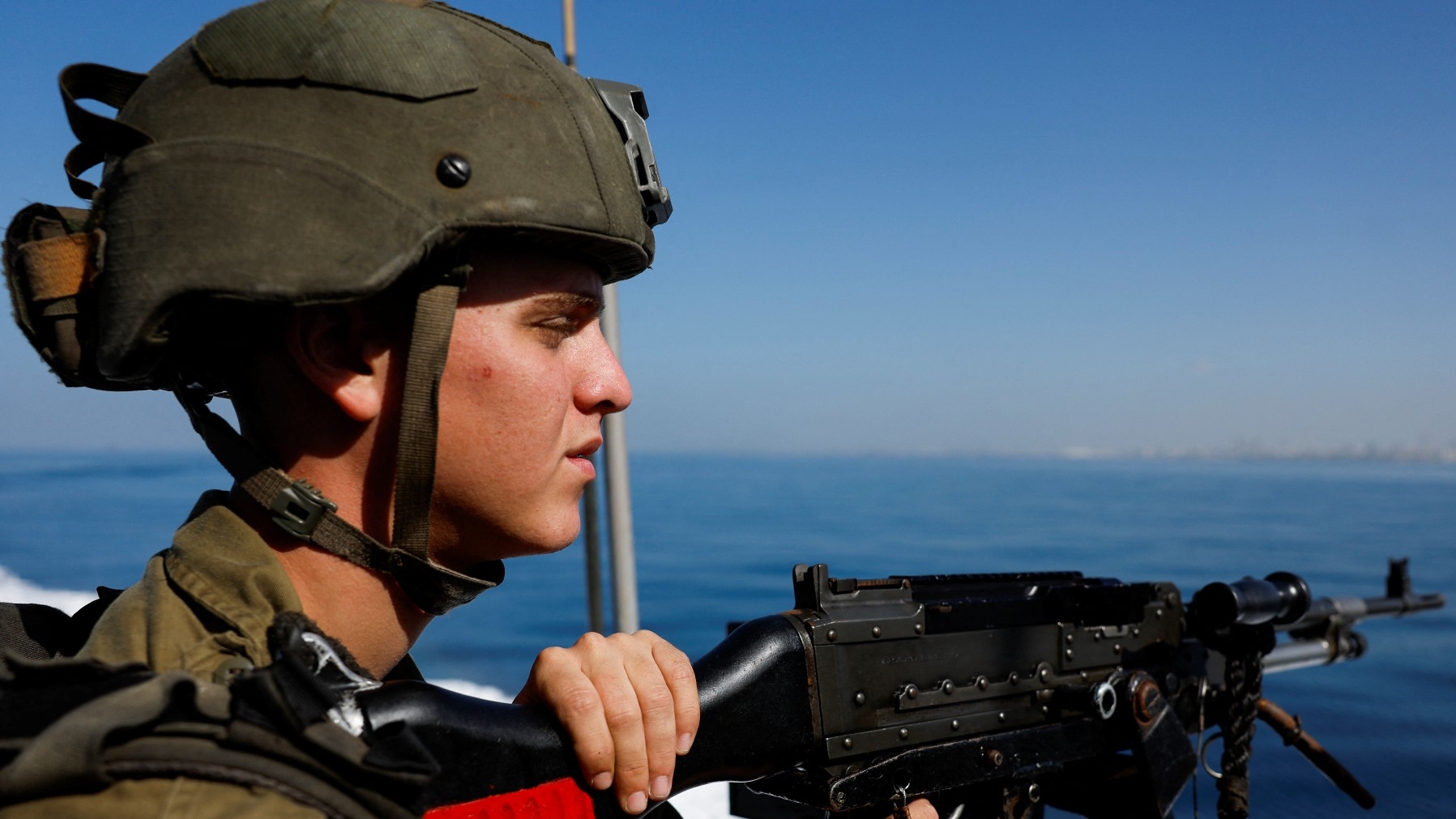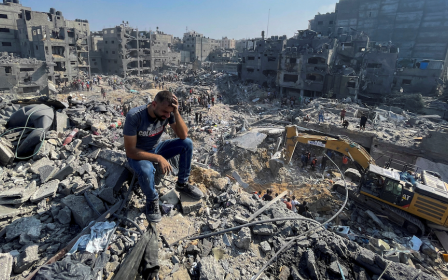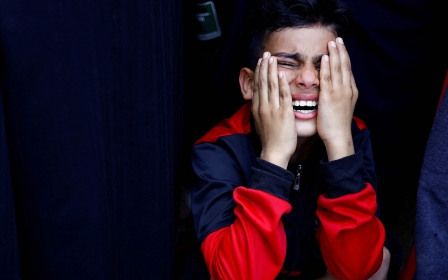Israel-Palestine war: Israeli tanks make slow Gaza advancements as urban clashes grow

As civilians continue to flee south, Israel has ramped up its ground offensive in northern Gaza, with the stated aim of eradicating the Palestinian group Hamas.
But the latest advancements and statements by Israeli leaders indicate the aim is also a renewed occupation of the strip, Palestinian sources said.
The military onslaught, dubbed Operation Iron Swords, is making slow advancements on the coastal enclave one month after hostilities started between Palestinian armed groups and the Israeli army.
Civilians have borne the brunt of the Gaza war in its first month, with over 10,000 killed by Israeli air strikes, including over 4,000 children. Most of the 1,400 deaths that followed the 7 October attack on Israel by Palestinian armed groups were also civilians.
The current ground invasion followed weeks of intense bombardment of the Gaza Strip.
New MEE newsletter: Jerusalem Dispatch
Sign up to get the latest insights and analysis on Israel-Palestine, alongside Turkey Unpacked and other MEE newsletters
According to the Israeli army, troops entered Gaza from the north and the east overnight on 27 October, with ground forces including artillery, tanks and bulldozers accompanying infantry and special forces. Meanwhile, Israeli fighter jets continue to bombard areas across the strip, killing hundreds of civilians on a daily basis.
Last week, the troops cut off northern Gaza - including Gaza City - from the south along the Johr al-Dik axis, also severing the main Salah al-Din and al-Rashid streets that Palestinians have been using to flee south.
Entering from Beit Lahia in the northwest, the Israeli army has advanced south along the coast for approximately 6.5km, reaching the outskirts of al-Shati refugee camp area on 4 November, according to the Israeli army and the Qassam Brigades, the armed wing of Hamas.
During the clashes on 5 and 6 November, the Israeli army extended its northwestern line of control to the east, approximately three kilometres from the coast inland, according to Gaza sources.
Sources in Gaza told Middle East Eye that the area controlled by the Israeli army on the Beit Hanoun axis reached three kilometres to the south of the fence line as of 6 November.
Urban clashes between Israeli and Palestinian combatants in the Beit Hanoun area started on 31 October, the sources said. The Israeli army is advancing more slowly in this area due to the ongoing battles in and around al-Karamah Street, they added.
Follow our live blog for all the latest on the Israel-Palestine war
So far, the Israeli army only confirmed the deaths of 34 of its soldiers in Gaza. At least 300 combatants were also killed in the 7 October Hamas-led attack on southern Israel that ignited the current hostilities.
While the Palestinian factions in Gaza have not announced their casualties, Palestinian sources told MEE on Wednesday that up to 200 fighters had been killed during the ground invasion, most of them members of the Qassam Brigades.
Meanwhile, as Israeli tanks take position in some areas in the strip, they have also used snipers and artillery to target civilians, according to Palestinian reports.
Israeli Prime Minister Benjamin Netanyahu, who accelerated the ground operations after the division of Gaza into two parts, said on Monday that his government would take control of the security of Gaza indefinitely after the war. He did not provide further clarification on Israel's post-war plans for Gaza.
Netanyahu's remarks, coupled with the army's insistence to drive all civilians to areas south of Gaza City, reinforced speculations that northern Gaza would be reoccupied at the end of hostilities.
In 2005, Israel redeployed its troops from inside the Gaza Strip to its perimeter, and has since imposed a land, air and sea blockade over the strip. Under international law, Israel remains an occupying power due to its effective control over Gaza.
A source close to Palestinian factions in Gaza, who spoke to MEE on condition of anonymity, said that it is their assessment that Israel is not driving civilians from the northern part of the strip to the south to clear the area for battles, but with the aim of reoccupation.
As the attacks on Gaza continue, reports have emerged indicating that Israel will target Hamas leaders inside and outside Gaza. Senior Israeli officials, including Netanyahu, have also made statements to this effect.
Israeli Defence Minister Yoav Gallant named Yahya Sinwar, the leader of Hamas in Gaza, as one of these targets: "We will get to Yahya Sinwar and eliminate him."
Despite these threats, sources in Gaza who spoke to MEE on condition of anonymity have said that Hamas leaders in Gaza are safe and have not fled.
Middle East Eye delivers independent and unrivalled coverage and analysis of the Middle East, North Africa and beyond. To learn more about republishing this content and the associated fees, please fill out this form. More about MEE can be found here.






